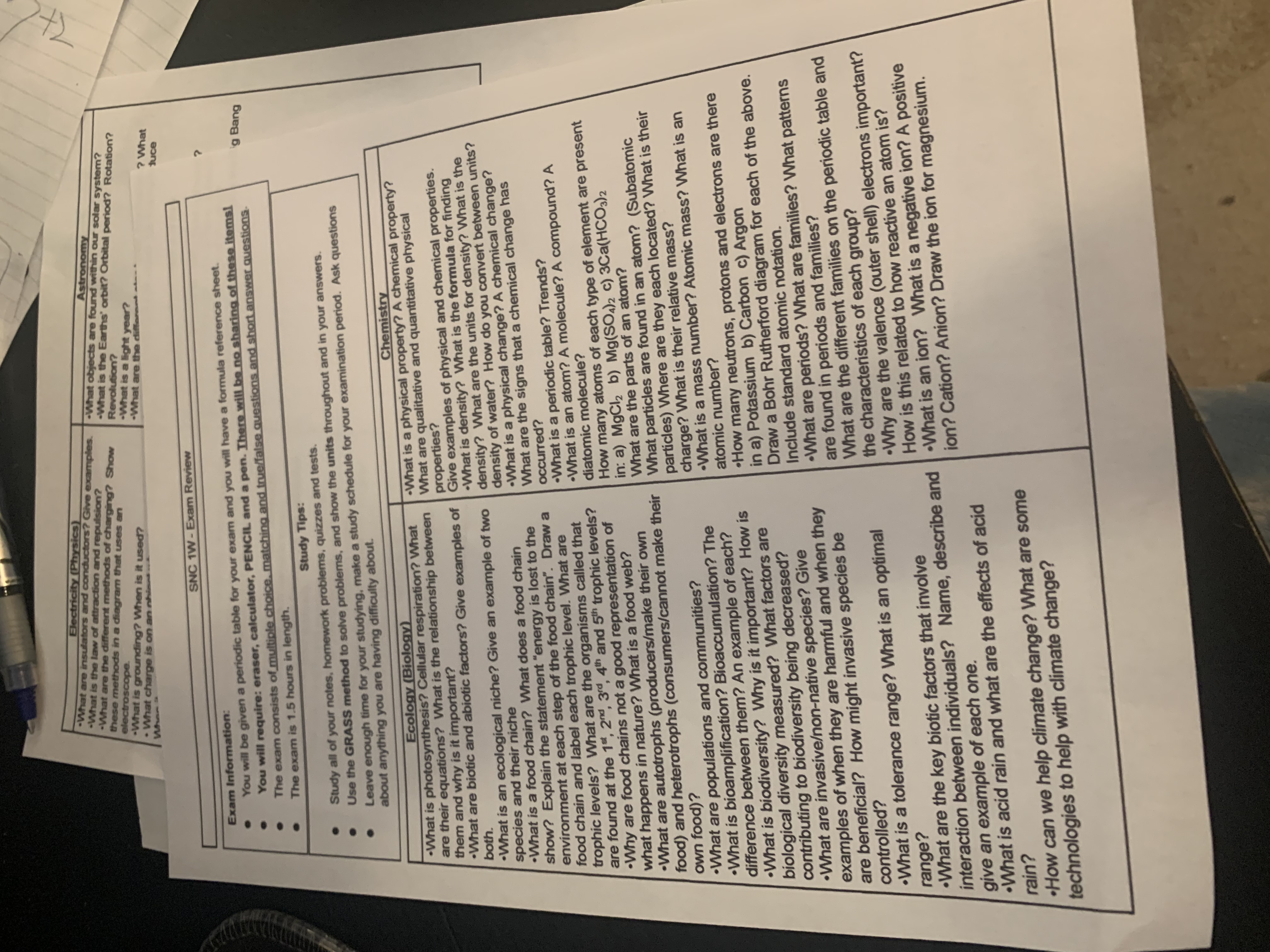What is photosynthesis? Cellular respiration? What are their equations? What is the relationship between them and why is it important? What are biotic and abiotic factors? Give exa... What is photosynthesis? Cellular respiration? What are their equations? What is the relationship between them and why is it important? What are biotic and abiotic factors? Give examples of both. What is an ecological niche? Give an example of species and their niche. What is a food chain? What does a food chain represent? Explain the statement 'energy is lost to the environment at each trophic level.' What are producers and heterotrophs? What happens in a food chain? What are autotrophs? What is bioamplification? Biocumulation? The difference between them? What is biodiversity? Why is it important? How is biological diversity measured? What factors are contributing to biodiversity being decreased? What are invasive/non-native species? Give examples of when they are harmful and when they are beneficial? How might invasive species be controlled? What is a tolerance range? What is an optimal range? What are the key biotic factors that involve interaction between individuals? Name, describe and give an example of each one. What is acid rain and what are the effects of acid rain? How can we help climate change? What are some technologies to help with climate change?

Understand the Problem
The question is a review sheet for an upcoming exam covering various topics in physics, biology, chemistry, and astronomy. It asks for explanations of concepts, definitions, and examples for each subject area listed.
Answer
Photosynthesis converts sunlight to glucose/oxygen; cellular respiration uses them for energy. Biotic factors are living elements; abiotic are non-living.
Photosynthesis converts sunlight into glucose and oxygen; cellular respiration uses glucose and oxygen to release energy. They form a cycle essential for energy flow in ecosystems. Biotic factors are living (plants, animals) and abiotic are non-living (water, temperature) elements in an environment.
Answer for screen readers
Photosynthesis converts sunlight into glucose and oxygen; cellular respiration uses glucose and oxygen to release energy. They form a cycle essential for energy flow in ecosystems. Biotic factors are living (plants, animals) and abiotic are non-living (water, temperature) elements in an environment.
More Information
Photosynthesis and cellular respiration are interdependent processes that sustain life by maintaining a balance of oxygen and carbon dioxide. Understanding these processes helps explain energy flow in ecosystems. Biotic and abiotic factors influence species interactions and ecosystem health.
Tips
Confusing the direction of energy flow between photosynthesis and cellular respiration. Remember, photosynthesis stores energy, and cellular respiration releases it.
Sources
- Cellular Respiration and Photosynthesis | CK-12 Foundation - flexbooks.ck12.org
- Photosynthesis & Cellular Respiration | Relationship & Formula - study.com
- Food chains & food webs (article) | Ecology - Khan Academy - khanacademy.org
AI-generated content may contain errors. Please verify critical information